Today, I want to delve into the world of drumming with you. So, what is drumming all about? To start, let’s look at two main styles: hand drumming and drumming with sticks. People have been playing on a drum set with sticks for ages, while African drumming incorporates both sticks and hands depending on the instrument. Interestingly, the modern drum set, often called a “kit,” is rooted in African drumming traditions. The origins of drums can be traced back to Africa—not Europe or America. This foundational source also influenced genres like jazz and rock and roll.
Now, let’s focus on hand drumming. There’s something truly special about the experience of drumming, and that’s likely why you’re reading this right now! Drumming isn’t just fun; it’s also a great way to stay healthy, tap into your inner rhythm, and connect musically and creatively with others. Drums possess a unique power and magic that can be hard to put into words, but anyone who has played can attest to it.
These days, many people recognize hand drums from drum circles or perhaps they’ve stumbled upon videos of African or Cuban drumming online. If you’re a bit older, you might remember being introduced to percussion through groups like Santana, especially their unforgettable extended jam in “Soul Sacrifice.” Whether you’re just starting out, looking to learn more, or are already a professional, you’re in the right place.
I won’t bore you with a long history of drums right now—we’ve got that covered in another article. Instead, let’s discuss hand drums and the art of hand drumming. Did you know that hand drums are actual musical instruments? Some people may dismiss them as toys or underestimate their importance, but drums are essential in music wherever they’re played.
It’s crucial to learn how to play the drum properly, just like any other instrument. Finding a qualified teacher can make all the difference, especially if you’re serious about learning. We offer comprehensive lessons here, catering to everyone from beginners to pros, but in-person instruction remains the most effective way to learn.
Drumming has its roots in oral tradition, passed down through generations. One great aspect of drums is that you can produce a sound with them the very first time you hit one. You can show up at a drum circle and start playing without any prior knowledge and still have fun. However, if you truly want to maximize that enjoyment, learning how to play and communicate through the drum is essential.
Every drum has its own voice, and when you play, you’re essentially having a conversation. Drumming has its own vocabulary and, at a minimum, you should learn how to strike the drum to create the basic sounds it was meant to produce. If you pick up a few foundational rhythms, you’re on an even better path. Without this knowledge, your playing might just sound like baby babble—monotonous and directionless.
But invest a little time into learning, and you’ll not only have more fun, but you’ll also learn how to support the rhythm as a whole and enhance your interactions with others, whether in a drum circle, a dance class, or any musical setting. Drumming is all about playing rhythms, holding down parts, and finding that groove, not just within yourself, but with those around you as well.
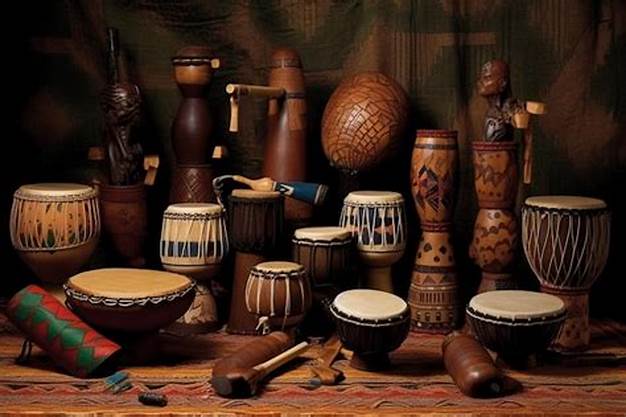
DON’T WORRY BE HAPPY!
Sometimes the prospect of learning something new seems daunting. However, there’s no need to feel overwhelmed by the thought or feeling of having to learn everything at once.
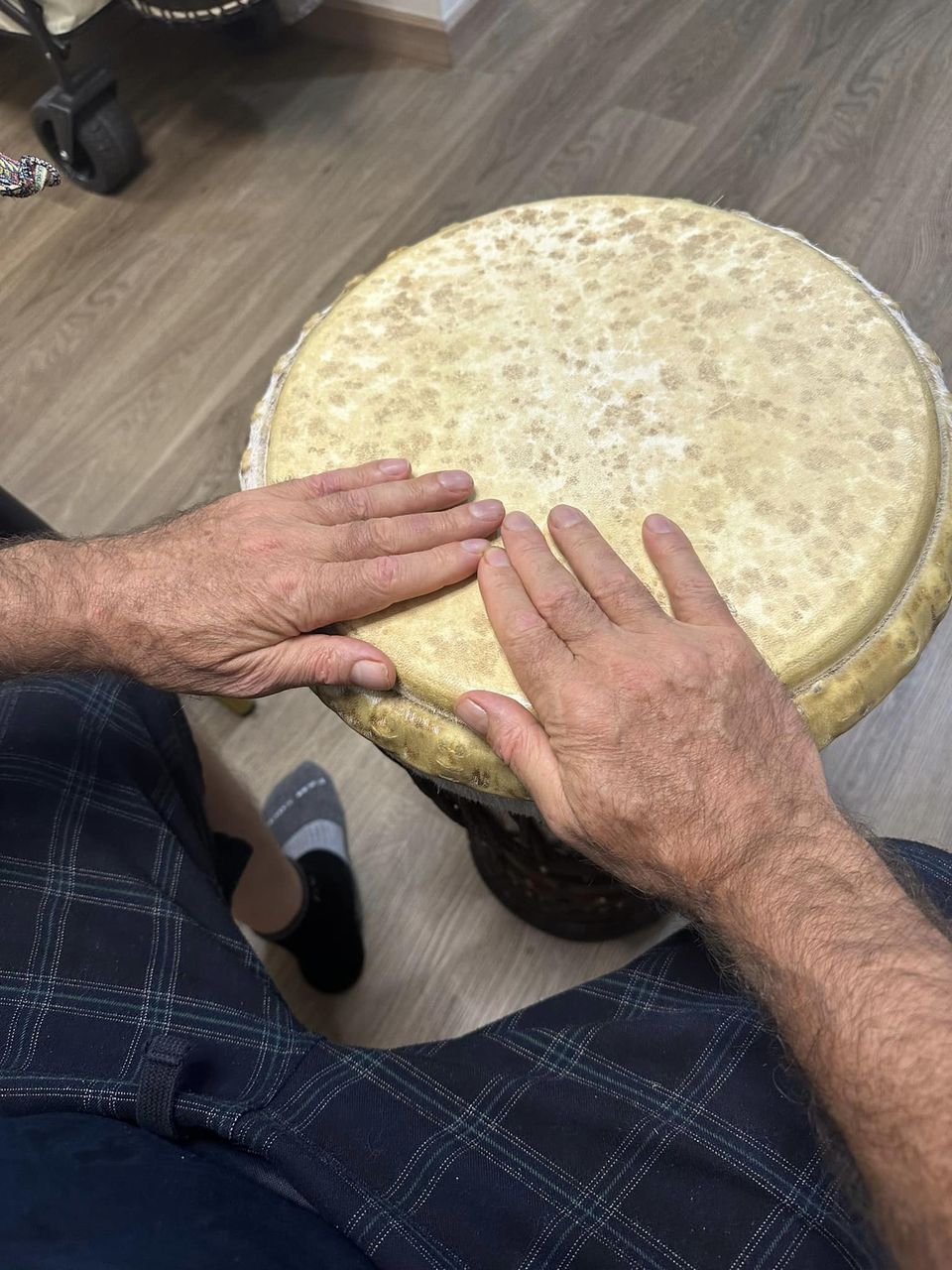
This is how to position your hands on a djembe drum. You form a triangle by touching your two middle fingers together
I believe this is why many people when they first get exposed to the wide world of hand percussion in the traditional sense, get put off and don’t even begin to learn about their instrument or the rhythms the go with it.
I wish when I first started someone said, “take your time, you will be doing this for your lifetime, there is no hurry and take it one step at a time”. Baby steps! It’s so interesting that if you are not a fast learner but take your time and be patient with yourself you will eventually get it.
Many people look at the vast sea of information available , maybe even here on this site, and go “wow, this is too much”.
A lot of people just want to have fun, be social and enjoy themselves. Why do they have to learn anything?
Some might not take on learning because they feel they’ve already done enough in their lifetime, while others understand just how challenging it can be. There are plenty of valid reasons for wanting to avoid learning or feeling apprehensive about it.
My quick answer is this. If you study, you will have more fun. Why? Because drumming, any kind of drumming you do is a language. And if you learn to speak correctly on your instrument and eventually to sing correctly, it’s a lot more fun then shouting or babbling without making any sense.
We have talked about this in prior articles, and this article is not to convince you to study. It is for those people that want to learn, but don’t know how to approach it. Or maybe you have started learning and having a difficult time?
Either way, if you’re eager to learn, I have some tips. Please let me share a personal story and a method that might resonate with you. For those who have been following me, you probably know that I started drumming back in the early ’70s.
My first teacher George wasn’t familiar with a variety of rhythms, which turned out to be perfect for me because I needed the repetition to grasp the basics. He had learned from his father a beatnik (prior to the hippies) who lived and traveled out of a van.
As I progressed he apologized for not knowing more, and I appreciated not being overwhelmed with too much information.
Eventually, he encouraged me to seek out a “real teacher,” ad said he knew the perfect person. I was very disappointed as I looked up to him, but he introduced me to someone who could teach me the language of the drum, as he put it. He told me there is a vocabulary and the drum makes sounds, rhythms and all kinds of fun stuff that sounded O.K. so I went a long with it reluctantly.

When I began formal lessons, I struggled even with the very first rhythm, which was deceptively simple. I understood the mechanics of what is called the tumbao, in Afro Cuban drumming. The low drum part in rumba and also when you play in a latin or salsa band, it’s the basic rhythm.
My hands just wouldn’t cooperate. I was fortunate to have a basement to practice in, and I committed to practicing every night fr hours or until my neighbors stopped me. I noticed and was disappointed that I learned at a slower pace than others in the class.
It’s hard to describe, but it was like I was trying to learn but also fighting something inside me as well. Almost like a voice saying, “you can’t do this”, or, “why can’t you do this you idiot”?!
But I did have persistence and with persistence, things started to click. And when they did, the feeling of accomplishment was immense. But, it was a slow uphill battle for me none the less.
This is what I realized early on though. The first thing was don’t listen to the voices in my head! For those of you who don’t have voices this might sound crazy so just go on to the next step.
Focusing on one rhythm at a time helped me”burn in” as I like to say and internalize the material. I would play that one rhythm, that one part for hours, days weeks. Now I am not saying this is what you need to do and you probably don’t, I am just telling you my story, which is on the extreme side of things,
As I continued to seek out different teachers and friends who could share knowledge, I saw it sometimes took longer to learn than my peers. But there was no rhyme or reason to it, some stuff I started to get fast and some I got stuck in the mud on.
But for me, just focusing on learning fewer things and not worry about how much I knew or learned was key. You don’t have to know the whole book at once, just the theme in this case anyway.
What eventually happened is that I learned a lot of different rhythms, compositions, playing styles and more, simply because I happened to stay with it for so long.
Over those nearly 50 years of taking lessons, while some students might pick up 25 things in one class session, I’d often come away with just one, two, or maybe three things.
I’d practice as much as I could, but sometimes it was not the complete picture.
However, as time passed, those single rhythms I worked on added up. The math of learning one or two things a week for 50 years really builds up over time.
So how does this relate to you? Do you have to be persistent? Do you have to play all night. The answer is no. You simply have a strategy. If you just want to play for fun, it’s not a serious thing that’s fine, learn a few rhythms. Just, learn them well, learn them simply and learn them part by part a step at a time.
The key takeaway here isn’t to boast about what I know or don’t know, but rather to emphasize the importance of learning one thing at a time. Give yourself time, even if you’re older. It’s not about how much you know, but about how well you play what you do know.
Focus on one rhythm—whether it’s on conga, bongo, dunun, or djembe. I’m often amazed by the resistance many people feel towards mastering basic accompaniment parts, known as passport parts, for djembe pieces from West Africa.
If you can concentrate on really learning one rhythm in the 4/4 family and another in the 6/8 (or 12/8) family, and internalize those patterns inside and out, you’ll be surprised at how far you can go.
Once you’ve got those down, you can start adding in another part. Just remember: don’t overwhelm yourself with too much variety.
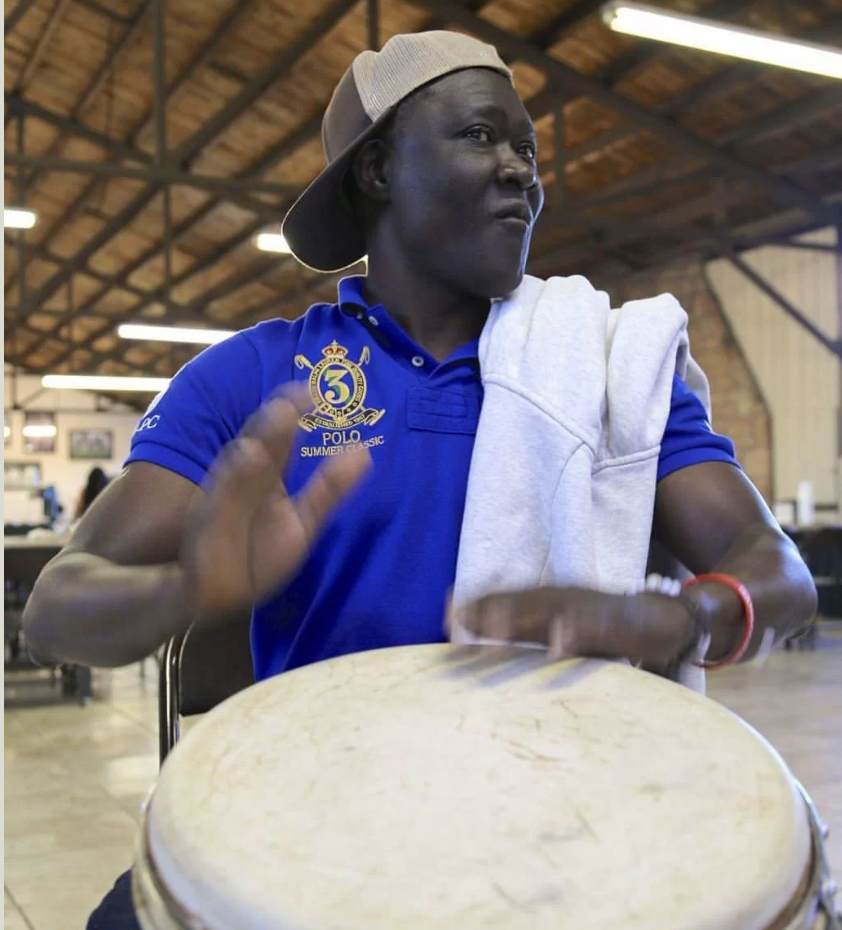
The Power of Traditional and Folkloric Drumming
Traditional and folkloric drumming is more than just musical expression; it is a powerful cultural phenomenon that transcends mere entertainment.
In West African societies—including Guinea, Mali, Senegal, the Ivory Coast, Ghana, and Nigeria—drumming serves as a historical narrative, an art form, and a communal bond that resonates from the rural village to the bustling urban center.
With its roots deeply entwined in the tapestry of everyday life, drumming carries the weight of history, identity, and spirituality, acting as a medium for storytelling, celebration, and social commentary.
While the djembe—a significant drum in many West African cultures—is often associated with drumming, it is important to note that the djembe became popularized more recently and did not emerge as a result of the transatlantic slave trade. Instead, it gained wider recognition in the latter half of the 20th century, gradually becoming a symbol of African musical heritage around the world.
The journey of African drumming extends far beyond the continent, as enslaved Africans brought their rich musical traditions to the Americas, including Haiti, Cuba, Brazil, and other South American countries.
These cultural transfers occurred through the transatlantic slave trade, during which enslaved individuals maintained their traditions by blending African rhythms with new influences from European and Indigenous cultures.
This fusion gave birth to vibrant musical forms that continue to thrive today, showcasing the resilience and creativity of African-descended communities.
As we delve into the richness of traditional drumming across these countries, we will explore how each nation’s unique history, culture, and communal practices shape its drumming traditions. From the communal engagements of rural life to urban performances that captivate diverse audiences, the drumming styles of West Africa and their diaspora showcase not only local identities but also a broader cultural significance that resonates globally.
While my studies have focused on specific regions, it’s important to acknowledge that there are countless other countries and locations, each with their own distinctive music, drumming traditions, and cultures. I encourage you to explore and discover more about these diverse places on your own.
1. West African Drumming
Guinea
- Characteristics: Guinea is renowned for its distinguished drumming traditions, particularly the djembe and dunun. The djembe, carved from a single piece of wood, boasts a vibrant range of tones. Traditional ensembles, such as Les Ballets Africains, present intricate rhythms and choreographed movements that highlight the cultural narratives of the Malinke people.
- Importance: Drumming in Guinea serves as both an expression of cultural identity and a celebration of social unity. It accompanies rituals, festivals, and social events, conveying historical and spiritual stories through rhythm.
Mali
- Characteristics: In Mali, the djembe and the dunun dominate the traditional drumming scene. African griots—traditional storytellers—often employ rhythm to enhance oral histories. There is also talking drum used.
- Importance: The music reflects social structures and historical narratives integral to Malian culture, playing a crucial role in weddings, communal gatherings, and remembrance ceremonies.
Senegal
- Characteristics: Senegalese drumming features the sabar, a drum utilized in diverse contexts, from traditional ceremonies to popular music genres like mbalax.
- The rhythmic patterns are dynamic, merging African traditions with contemporary influences.
- Importance: Drumming encapsulates the spirit of community and celebration in Senegal. It is vital for the Sabar, a dance-drumming tradition that strengthens social bonds and acts as a vehicle for cultural expression.
Ivory Coast (Côte D’Ivoire)
- Characteristics: The Ivory Coast has a rich array of percussion instruments, including the batá and djembe. Different ethnic groups, such as the Akan and Krou, display distinctive drumming styles often accompanied by dance.
- Importance: Drumming serves ceremonial and social functions, fostering community cohesion and manifesting cultural diversity through rhythm, dance, and storytelling.
Ghana
- Characteristics: Ghanaian drumming incorporates instruments like the atumpan (talking drum) alongside various hand-played drums, including the djembe. Rhythms often align with local dances, such as Adowa and Kpanlogo, showcasing complex interlocking patterns.
- Importance: Drumming in Ghana is integral to ceremonies, social events, and cultural celebrations, conveying messages, telling stories, and linking the living to their ancestors while reflecting communal values and cultural heritage.
Nigeria
- Characteristics: Nigeria boasts a rich variety of drumming traditions characterized by instruments such as the batá and djembe. The bata drum is particularly significant among the Yoruba people, often used in various ceremonial contexts, including traditional worship and celebrations.
- Importance: In Nigeria, drumming is integral to identity, community events, and social cohesion. It acts as a powerful means of communication and expression, playing vital roles in rituals, festivals, and storytelling.
2. Haitian Drumming
- Characteristics: Haitian drumming is characterized by its energetic and rhythmically rich sounds, prominently featuring the tanbou. The rhythms like “Ibo” and “Petro” connect deeply to Vodou practices and vary by context and purpose.
- Importance: In Haiti, these rhythms serve as conduits to the spiritual world, facilitating communication with the Lwa (spirits) during religious ceremonies and reinforcing community identity and resilience. The drumming is often accompanied by dancing, which is a vital part of the Vodou ritual experience.
3. Afro-Cuban Drumming
- Characteristics: Afro-Cuban drumming represents a profound fusion of African rhythms and Spanish melodic elements. Central instruments include conga and batá drums, which play significant roles in performance styles like Rumba and Guaguancó.
- Importance: These traditions maintain African heritages while celebrating Cuban identity. Through drumming, Afro-Cuban communities create a form of cultural resistance, using music to unite diverse populations. Drumming rituals in Santería, for example, serve to summon deities and invoke blessings.
4. Brazilian Drumming
- Characteristics: Brazilian drumming features a variety of styles, including Samba, Bossa Nova, and the martial arts-inspired rhythms associated with Capoeira. Instruments such as the surdo (a large bass drum) and caixa (snare drum) play key roles, bringing festive energy and high levels of audience participation.
- Importance: Drumming during Carnival and community festivals fosters social connection, cultural pride, and artistic expression. These rhythms often reflect the historical struggles of Afro-Brazilian communities, serving as a platform for dialogue about identity and resistance.
5. Other South American Countries
In Colombia and Venezuela, African drumming styles manifest through genres like Cumbia and Porro. These rhythms blend Indigenous and Spanish influences, reinforcing cultural identity and historical narratives across various communities.
Folkloric vs. Traditional vs. Village Drumming and Ballet Style
- Folkloric Drumming: This term typically refers to drumming traditions that are rooted in the specific cultural practices of a community, often tied to rituals, festivals, and storytelling. Folkloric drumming may focus more on the cultural elements and less on performance.
- Traditional Drumming: Generally encompasses a broader category that can include both folkloric elements and the formalization of drumming techniques and skills taught across generations. Traditional drumming is often characterized by its adherence to historical methods and rhythms that define a culture.
- Village Drumming: This style emphasizes communal participation, often occurring in informal settings where community members come together to play and dance. Songs and rhythms may evolve through shared experiences, reflecting the village’s collective history.
- Ballet Style Drumming: While distinct from traditional folk drumming, ballet-style drumming integrates structured rhythmic patterns meant to enhance classical ballet performances. This hybrid approach combines traditional rhythms with classical dance, creating a unique platform for cultural exchange and artistic expression.
The Importance Of Understanding These Traditions
Learning about these diverse drumming styles deepens our understanding of the cultural contexts and historical narratives they carry. This knowledge is crucial for any aspiring drummer for several reasons:
- Cultural Appreciation: Understanding the origins and meanings behind the rhythms enhances a drummer’s appreciation for the art. This respect can inspire creativity and innovation within one’s own playing.
- Technical Skill Development: Delving into specific drumming techniques requires practice and discipline. Learning various styles widens a drummer’s skill set, promoting versatility and adaptability in performance.
- Expressing Identity: Engaging with diverse drumming traditions allows musicians to explore their own cultural identities, thus broadening their artistic expression and resonating more deeply with audiences.
- Community Connection: Drumming is a communal activity. Understanding cultural nuances fosters social connections with other drummers and audiences, allowing for meaningful exchanges and collaborations.
- Spiritual Connection: Many drumming traditions are tied to spirituality and ceremony. Acknowledging these aspects can deepen a drummer’s connection to the music, enriching their practice as a form of reverence and expression.
Conclusion
Traditional drumming in Guinea, Mali, Senegal, the Ivory Coast, Ghana, Nigeria, Haiti, Cuba, Brazil, and other South American contexts serves not only as artistic expression but also as a crucial link to communal identities, spirituality, and historical narratives.
These traditions endure and evolve, continuing to celebrate and articulate deep cultural connections for future generations. Through drumming, communities preserve their past, articulate their present struggles, and inspire hope for the future, making it a universal language that unites people across diverse cultures.
Understanding these complexities is vital for developing one’s skills and fostering an appreciation for the transformative power of music.Your unique rhythm is inherently valid and important! Every individual possesses a natural rhythm, a fundamental aspect of our being. Just think about those moments when you hear a song and instinctively start tapping your foot or bobbing your head—be it in a bank, a mall, or your car.
Often, without even realizing it, our bodies instinctively keep time with the music. It is a marvelous thing.
OUR OWN UNIQUE RYTHM
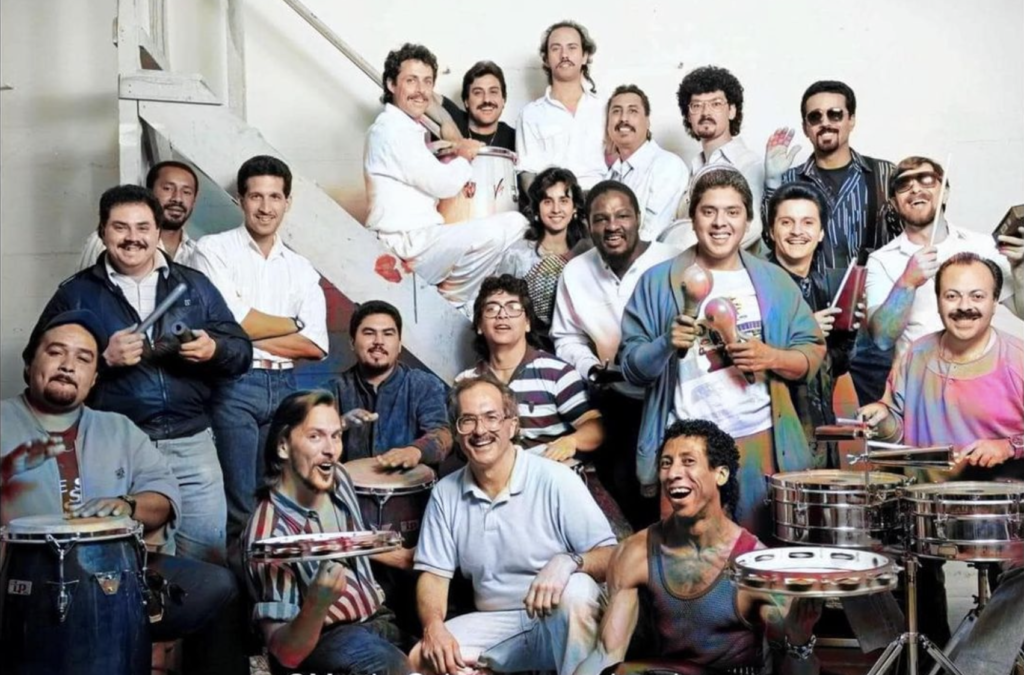
Welcome to My Drumming Haven
Welcome to my drumming haven! Whether you’re a newcomer to the world of drumming, a curious percussion enthusiast, or simply exploring the varied offerings on this site, you’ve landed in the perfect place. Here, you will discover a rich tapestry of resources that reflect my lifelong passion for music and rhythm, honed over 50 years as a professional drummer.
Throughout my journey, I’ve had the privilege of studying with master drummers from around the globe and performing alongside some of rock and roll’s legends, as well as esteemed West African and Afro-Cuban drum masters. But enough about me—let’s focus on you!
Drumming, in any form, can be an incredibly rewarding pursuit. Whether you’re jamming casually, participating in dance classes, or playing in a band, it can be a delightful hobby, a fulfilling pastime, or even a professional career. The beauty of drumming is that it’s entirely up to you; the possibilities are limitless!
On this website, you’ll find a variety of music projects, videos, and an abundance of free resources to explore and enjoy. Our drumming experiences—whether in jam sessions, drum circles, or formal classes—are deeply rooted in traditional forms that emerged from the West and Central African diaspora.
This rich heritage traveled to new lands, significantly influencing the music of Cuba, Haiti, Brazil, Trinidad, and beyond. Today, we celebrate this vibrant culture through traditional and folkloric drumming, which is a beautiful blend of history and rhythm.
But this website is much more than a collection of drumming resources; it is a space for you to learn about traditional rhythms and discover your own inner rhythm and path.
Rhythms transcend mere beats; they play an essential role in various cultures around the world. In countless traditions, rhythm serves as a vehicle for storytelling, emotional expression, and communal bonding.
By tapping into your inner rhythm, you can experience profound benefits for your mental and emotional well-being. Engaging with rhythm can enhance cognitive function, improve mood, and foster connections with others. It allows you to express feelings that may be difficult to articulate with words, leading to deeper self-understanding and enriching your relationships with those around you.
As we journey together on this website, I encourage the sharing of experiences and the creation of a supportive community where everyone can celebrate their unique rhythm.
Each individual’s rhythm is crucial, and together we will explore how these diverse rhythms can interact and harmonize. This collective exploration enriches not only our personal journeys but also strengthens the connections we foster with one another.
So come on in, bring your rhythm, and embrace this opportunity to dive into the powerful role rhythm plays in our lives! Through this shared experience, we will uncover the joys of musical expression and discover new ways to integrate rhythm into our everyday activities, transforming each day into a celebration of the beat that resides within us all.
Let’s embark on this rhythmic adventure together, delving deeper into the captivating world of West African drumming, with a focus on the djembe and dunun from regions such as Guinea, Mali, Senegal, and the Ivory Coast. Embrace the thrill of learning and allow yourself to be immersed in this rich tradition.
Welcome once again to my drumming haven, where each beat brings us closer to our inner selves and to each other!
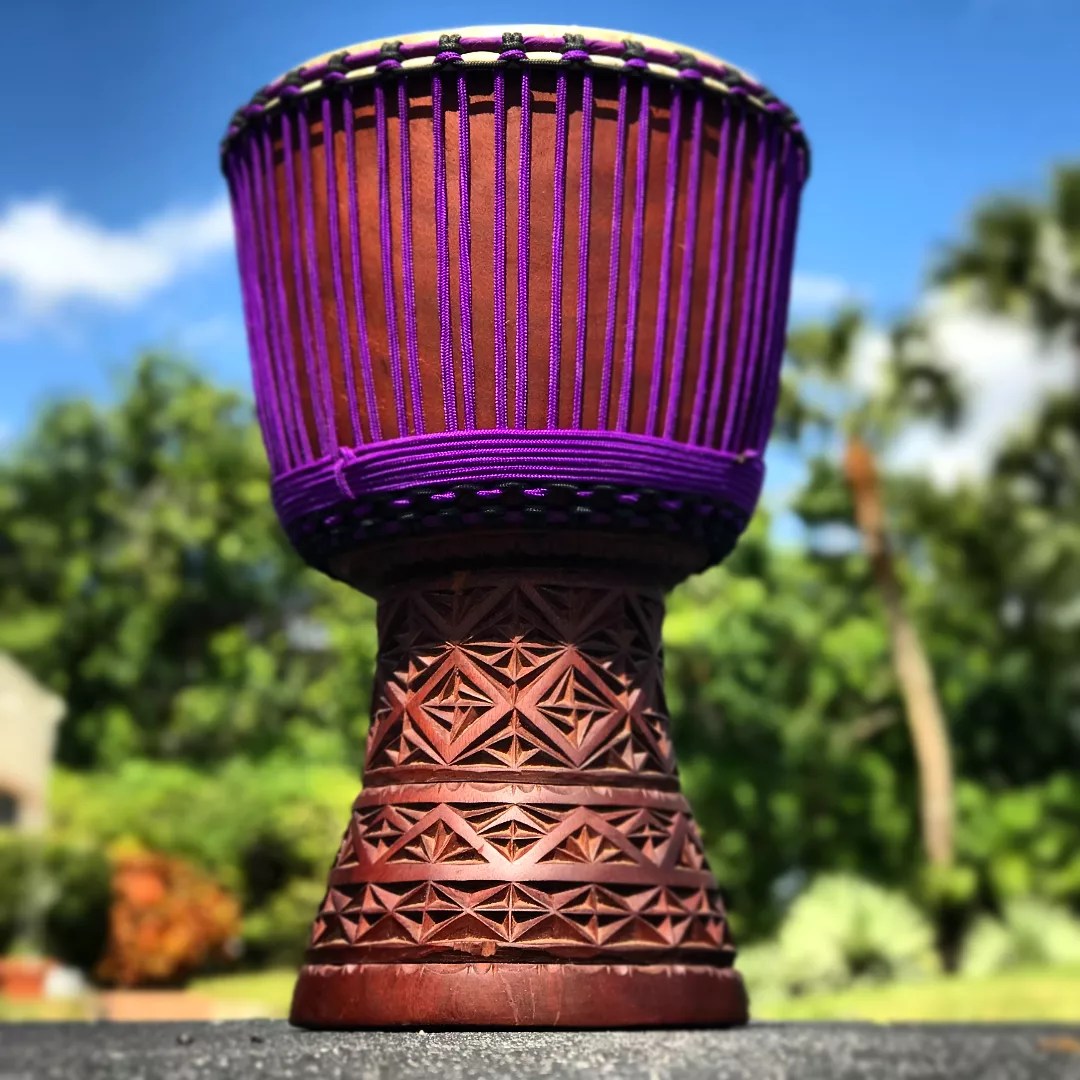
HAVING FUN LEARNING TO DRUM
Hand drumming, along with traditional and folkloric styles of drumming, represents a rich tapestry of cultural expression and musical exploration. Engaging with these art forms can indeed evolve into a serious academic pursuit. Mastery often requires hours, days, and even weeks of dedicated practice, as drumming is as much about precision and technique as it is about creativity and expression.
Personally, I have embarked on this journey, working on various techniques and rhythms for years, and although the process can often feel tedious—especially when practicing alone—I relish the challenge and the continuous growth it brings.
One of the great advantages of learning hand drumming is the journey itself. The rhythmic patterns and intricate techniques found in traditional drumming might seem overwhelming initially, but each small victory—whether nailing a particular section or understanding a complex rhythm—provides immense satisfaction.
The social aspect of drumming can also transform your experience; this is why seeking out a teacher, attending workshops, or joining a drumming circle can be vastly beneficial.
A teacher brings not only expertise but also inspiration, guidance, and a wealth of cultural context that enhances the learning experience.
Regardless of whether you choose to study with a teacher in person, participate in online courses, or glean wisdom from YouTube tutorials, the ultimate goal remains the same: to have fun. This balance between structured learning and playful exploration is what makes drumming so captivating. It invites you to immerse yourself in a duality where discipline meets joy, and that interplay can lead to deep personal satisfaction.
Learning to drum also engages the mind in fascinating ways. Rhythm can serve as a unique form of mathematics, where patterns and time signatures become a playground for logical thought and creativity.
For many, the act of practicing drumming is not just about making music; it can be a fun and engaging way to experience numerical concepts like fractions and ratios. Each beat is a unit of time that can be divided and manipulated in various ways, providing a solid foundation for those who enjoy the mathematical aspects of music.
The ways in which individuals absorb this knowledge vary widely. Some are visual learners and benefit from watching others play or reading notations, while others are auditory learners, thriving on listening to patterns and replicating them.
Tactile learners might feel the rhythm through their hands before it even translates into sound. It’s intriguing to note that while some individuals may gravitate towards a singular method—like strictly visual or auditory learning—many, including myself, embrace a more eclectic approach, experimenting with various learning styles to achieve understanding.
In essence, exploring hand drumming and its traditional styles is not just about hitting a drum; it’s about engaging with a powerful form of communication, connecting with history and culture, and uncovering personal potential.
The road may be long and, at times, arduous, yet the joy of mastery and the thrill of performance transform this process into a delightful journey that resonates deeply with both the mind and the spirit. Through practice, collaboration, and an openness to explore diverse strategies, every aspiring drummer can find their unique rhythm in this beautiful art form.
JUST STARTING OUT?
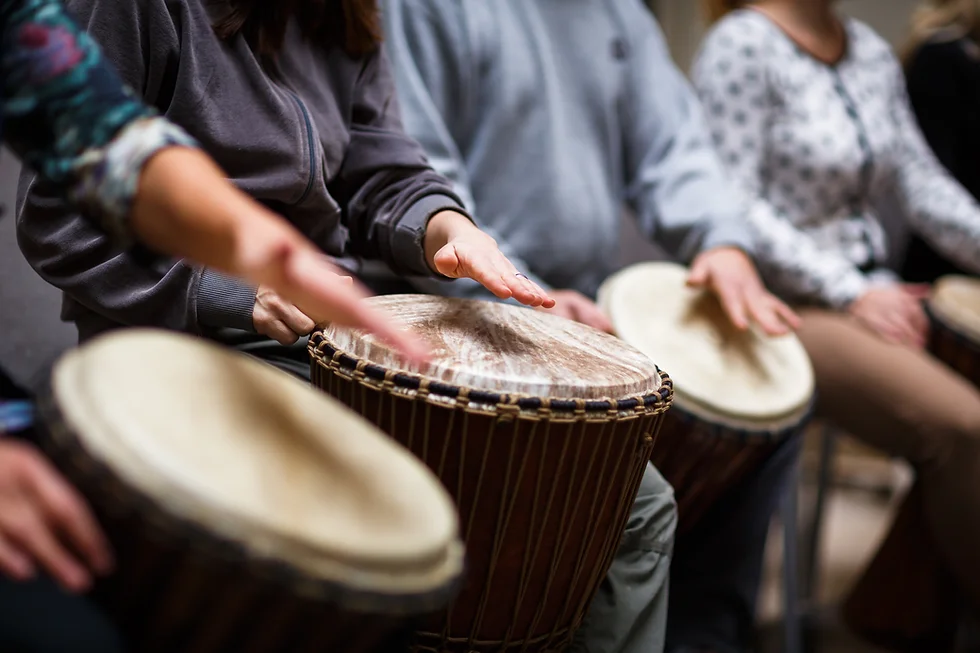
As you embark on your journey to learn the language of djembe, I’d like to share my insights on why I recommend learning traditional drumming techniques rather than simply attending a drum circle and doing your own thing. While personal expression and creativity are essential, understanding the fundamental language of the drum will allow you to communicate more effectively with others and tap into the rich cultural heritage of West African drumming.
As a guide, I’m here to offer my experience and expertise to help you navigate the process of learning to play the djembe. I’ve learned the hard way, and I’d like to spare you some of the mistakes I made. Whether you choose to learn from me or follow another path, it’s entirely up to you.
If you’re new to djembe, I highly recommend starting with a proper-sized drum that’s well-tuned. A drum that’s too small or too large will make it difficult to produce the desired sounds. For beginners, I suggest a drum between 12″ and 13.5″ in diameter. You can find excellent starter videos online, but be cautious and take your time to find reputable instructors.
Having a teacher can be incredibly beneficial. Look for someone who is experienced, knowledgeable, and has a good reputation. Don’t be afraid to ask questions and research their credentials. Remember, there are fakes and charlatans out there, so it’s crucial to be discerning.
Once you have your drum, practice regularly, even if it’s just for a few minutes a day. Consistency is key. Play along with music, CDs, or videos to help you develop your skills. If you’re taking a class, practice what you learned immediately after the session. Film yourself playing to reinforce your learning and prevent forgetfulness.
To take your drumming to the next level, focus on developing different tones, dynamics, and rhythms. Approach the drum with respect, intention, and study it as you would any other instrument. The time you invest will yield results.
I want to emphasize that drumming is a language, just like any other. We need to learn how to speak it correctly to communicate effectively with others. Without proper instruction and practice, you’ll only be able to “babble” on the drum.
When you attend a drum circle or watch professional drummers perform, remember that they didn’t become proficient overnight. They put in countless hours of practice and dedication. If you’re looking for fun, I guarantee that learning the language of djembe will bring you even more joy and fulfillment.
I know that not everyone may be interested in learning traditional drumming techniques, but I encourage you to consider the benefits of investing time in this beautiful art form. By learning the language of djembe, you’ll open yourself up to new experiences, connections, and cultural understandings.

